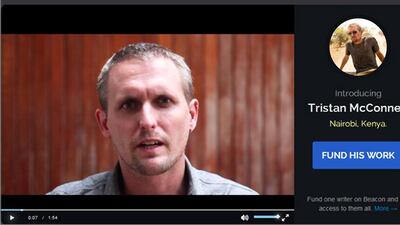With newspaper circulation in decline around the world, innovators are coming up with new ways for readers to access and fund journalists. David Mattin reports
The print media landscape is in the middle of profound change. Fewer and fewer people are doing what you’re doing right now: reading newspapers either in their paper incarnation or online. Across the developed world, newspaper circulations are in decline and even the most venerable titles are not immune. One example? Back in the late 1990s, The Times in the UK had a circulation above 900,000 copies a day; now it’s hovering around 390,000.
And can this be a surprise, given the multidimensional universe of new written content – and video content – that has come into being during that period? Today, readers under 50 are just as likely to get their daily dose of news analysis, humour or sports insight from their favourite blog as they are from a newspaper. And, crucially, they’re likely to get that content for free.
No wonder many media analysts are of a firm mind: traditional print media is dead on its feet. In fact, the whole idea of a journalist as we conceive of it to this point is an anachronism. What need do we have for traditional journalists when we have a networked army of ordinary citizens, equipped with smartphone cameras, ready to report from any scene of any incident?
But now, a spate of new start-ups are attempting to prove that there can be a future for traditional written journalism. Central to their project are two ideas.
First, readers will still pay for news if media platforms can serve readers what they really want. Second, there is something about traditional written news – and the traditional journalist – that is worth saving.
Take Beacon Reader, a new platform that allows users to fund individual journalists, chosen from a selection posted in hot spots around the world. Users of Beacon Reader can study a list of journalists, such as Mujib Mashall, who writes on life in Afghanistan, or Adam Baron, reporting from Yemen, and choose to fund one writer for US$5 (Dh18) a month.
Funding a writer means having access to their articles and all the articles written by the ever-growing list of journalists on the site. Most of a user’s subscription fee goes straight to the writer they pick; the rest helps pay for the platform.
Other platforms are trying something similar. Tone, a Dutch platform, boasts 23 high-profile writers and asks users to subscribe for €5 (Dh25) per month. Meanwhile, another Dutch experiment, De Correspondent, is a crowdfunded news platform that raised $1.3 million (Dh4.8m) in just under a week earlier this year.
This trend isn’t only important if you’re a journalist wondering what your career will look like in 10 years – it has implications for all of us for how and what we learn about the world. After all, are we ready to hand scrutiny of our political leaders, and of big corporations, over to bloggers, tweeters and Instagrammers? Won’t we lose something if we lose traditional journalism?
Rigorous, professionally edited, fact-checked journalism plays a vital role in the life of any nation. Yes, the package it comes to us in, and the business models that support it, are well past due for an update. But professional written news journalism itself? That’s as valuable as ever.
Then again, I would say that.
David Mattin is the lead strategist at trendwatching.com
artslife@thenational.ae

